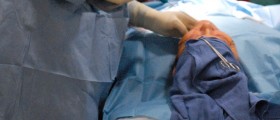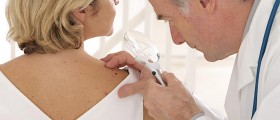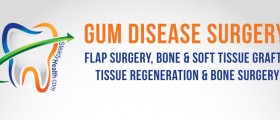
Eyelid Surgery - Overview
Eyelid surgery, medically known as blepharoplasty, is a surgical procedure which includes removal of the excess of skin, fat tissues and muscles. The surgical correction improves the appearance of droopy eyelids. It also improves the look of baggy skin under the eyes. Apart from being performed in aesthetic purposes, blepharoplasty is also done in patients suffering from a medical condition called ptosis (dropping eyelid caused by poor muscle tone or nerve damage).
The procedure is in many patients performed together with other cosmetic surgeries such as a brow lift or facelift. During the procedure a surgeon makes incisions along the line creases of the upper eyelid and the outer lower rim of the eye's skin. The excess of fat tissue, muscles or skin is then removed. This procedure is basically performed under local anesthesia while general anesthesia may be indicated in a certain number of patients. Blepharoplasy never lasts longer than three hours. Patients are not held in the hospital. Instead they go home the same day after the surgery.
After the Eyelid Surgery
Patients who have undergone blepharoplasty are advised to rest. In many cases the eyes are covered with bandages. Excessive swelling of the eyelids is reduced with cold compresses. The cold can be distributed via gauze pads or a clean towel soaked in a basin of ice cubes. Cold compresses may be also in a form of a large Ziploc bag filled with ice cubes. Swelling is most intensive in the morning following the surgery. Pain after blepharoplasty is not so intensive and can be alleviated with certain painkillers. However, intensive pain must be reported as soon as possible. Patients should not worry if the eyelids are red and bruised or there is a small amount of bloody fluid draining from the wound. These are normal reactions of the surrounding tissue to the operation. Only severe bleeding which cannot be controlled by pressure must be reported at once.
In order to prevent infection patients are prescribed antibiotic ointment. The ointment is supposed to be applied directly onto the wound.
Patients may engage in modern activity three days after the surgery. Bending and straining are forbidden for at least three days. Vigorous activities such as jogging are not allowed for at least 10 days and swimming for three weeks. Reading and computer work are not considered harmful. Still, they may be difficult.
Sutures are generally removed 4 to 6 days after the surgery. Patients may resume wearing contact lenses after a week. The scar is visible right after the surgery but it generally continues to fade and soften in the following months. And finally, the incision may be tender for certain period of time while some patients may experience itching.
















Your thoughts on this
Loading...